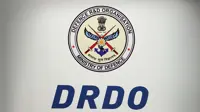Rural India spurring FMCG, vehicle sales: Assocham
08 Apr 2009
Rural India is pushing up demand for fast moving consumer goods, two-wheelers, passenger cars and organised retail goods faster than urban areas, giving a healthy revenue growth to firms even as the global meltdown deepens, a study commissioned by the Associated Chambers of Commerce and Industry in India has found.
Rising rural income, mainly from growth in agriculture, combined with better penetration by companies into the rural market, has created demand for some key sectors, the Assocham study, 'The rise of rural India', has concluded.
 "A majority of FMCG firms, such as DCM and ITC, have been recording higher growth rate and sales of their product in rural areas as compared to urban markets," the report said.
"A majority of FMCG firms, such as DCM and ITC, have been recording higher growth rate and sales of their product in rural areas as compared to urban markets," the report said.
"The FMCG sector in rural areas is expected to grow by 40 per cent as against 25 per cent in urban areas," said Assocham president Sajjan Jindal. However, he did not give any time frame for these projections.
For the automobile industry, the rural market has been traditionally restricted to tractors and two-wheelers, though the penetration of scooters and motorcycles in villages is still only 10 per cent, compared to 25 per cent in urban areas.
This, according to the study, is due to the high investment involved, the poor condition of rural roads, lack of finance facility and a relatively poor service network. However, auto firms have of late begun tapping the countryside. For instance, Maruti Suzuki generates 10 per cent of its sales from rural sales, amounting to 32,000 cars.
Like Maruti, two-wheeler leader Hero Honda is planning a special rural campaign to cover 100,000 of the estimated 600,000 villages in India by the end of this financial year.
Mahindra and Mahindra, which so far has stuck to cars, now plans to foray into the two-wheeler segment targeting India's hinterland, with an initial investment of Rs110 crore, the study observed.
It also noted Hyundai's interest in the rural areas, where the auto manufacturer feels almost 50 percent of the 220 million households are potential buyers for its popular compact car Santro.
Another potential area was the rural retail market - currently estimated at over Rs560,000 crore, or around 40 per cent of the Rs1,400,000 crore retail market.
The industry group said this was expected to double in the next four or five years, though only about 10,000 out of India's 600,000 villages have access to organised retail services.
The report said the growing liquidity in rural areas was on account of subsidies to farmers and increase in output of agri-products.


.webp)
.webp)

.webp)


















